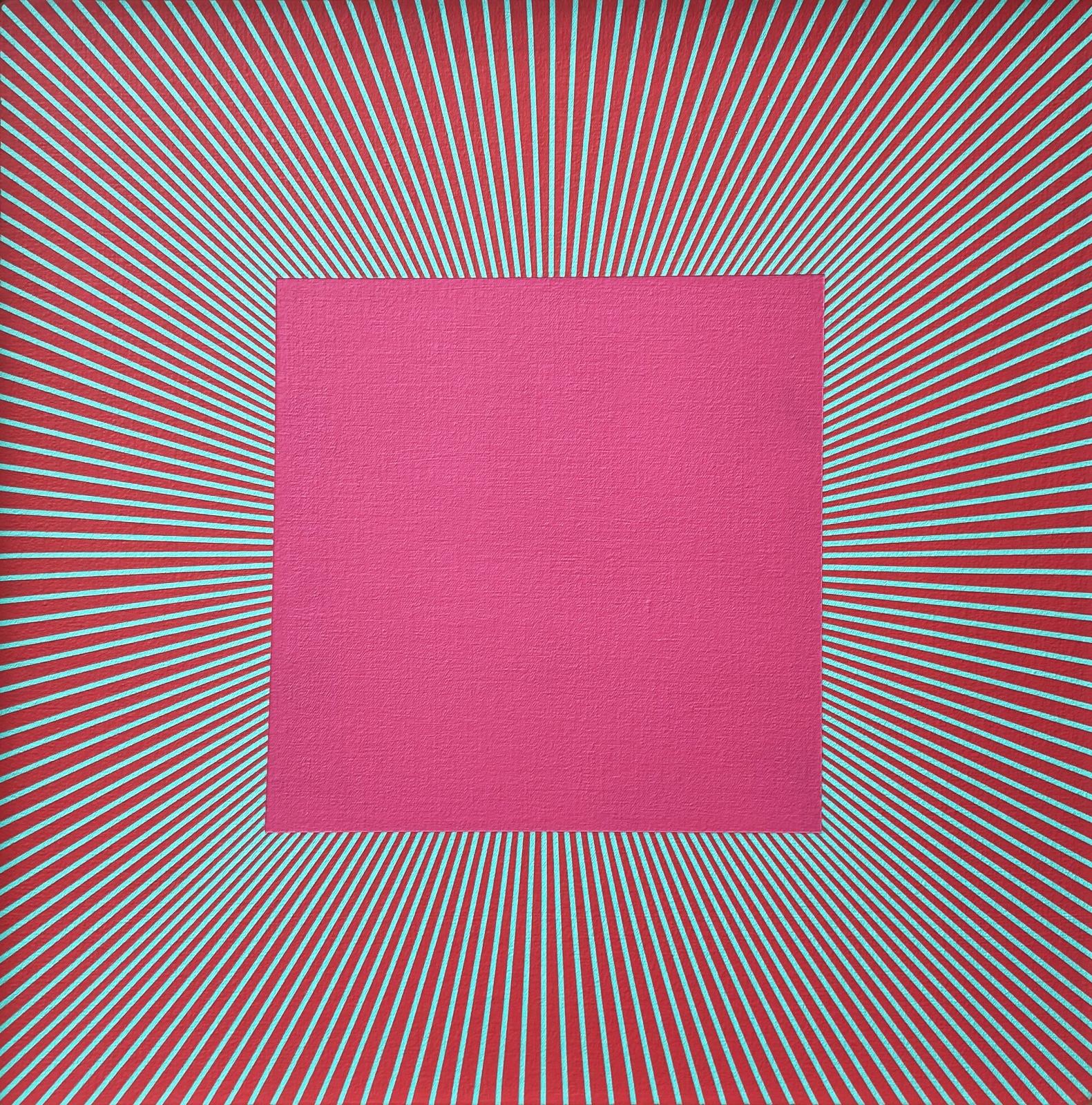artist
Anuszkiewicz was an integral member of the Op Art Movement, championing a visual style that made use of optical illusions. One of the foremost colorists in American art, Anuszkiewicz was mentored by Josef Albers, who influenced the young artist's interest in the effects of color on visual perception. Beginning in the 1960s, Anuszkiewicz created canvases boasting repetitive geometric patterns. A number of high profile exhibitions of his work at the Whitney during that decade sparked curatorial interest in his work. The exhibition Americans 1963 at the Museum of Modern Art, coupled with a Time Magazine article on the artist as well as the MOMA's 1965 exhibition The Responsive Eye cemented Anuszkiewicz' status as one of the preeminent American Op artists, if not its leader.
Description
With strong internal structure highlighted by intense color complements and crisp geometries, Summer Rose is a prime example of Anuszkiewicz’ mature work from a decade in which he mounted seven solo exhibitions. You may be tempted to call this painting abstract but as a colorist Anuszkiewicz’s concerns about figure-ground movement are more akin to traditional painting, both of which share a reliance on the illusion of depth through manipulation of color relationships. This compelling composition simultaneously draws you to the center and blocks you from seeing it. The primary focus, the central square, floats above the converging, or radiating, lines. Chromatically resonant they lift the central element off the plane.
Anuszkiewicz studied color theory with Josef Albers at the Yale University School of Art and, along with Bridget Riley, and Julian Stanczak, was a founding exponent of an illusionistic style of painting, begun by Victor Vasarely, that became known collectively as Op-Art.













